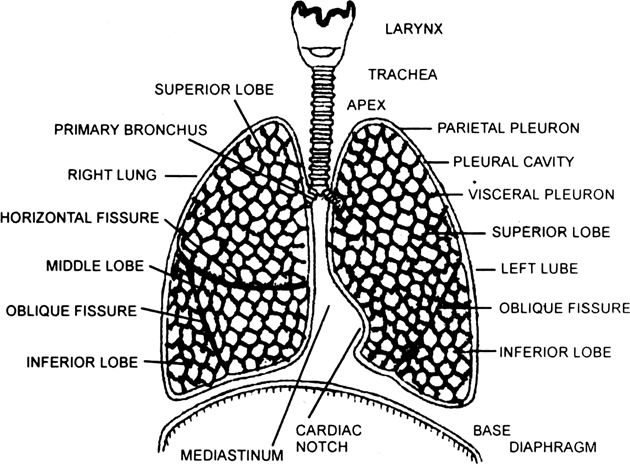 Long Answer Type
Long Answer TypeRespiratory tract of man consists of :
1. External nostrils : The external nares are two slits at the lower end of the nose. These open into the nasal chambers.
2. Nasal chambers : Two nasal chambers are separated from each other by nasal septum. Each chamber has the following three regions :
3. Internal nares (conchae) : The nasal chambers open into the nasopharynx by internal nares.

Fig. Respiratory Organs of man
4. Pharynx : Its upper part is called nasopharynx. The internal nares open into it. Its middle part is called oropharynx and lower part is called laryngopharynx.
5. Larynx : The larynx is called the Adam’s apple and is more prominent in men than in women.
6. Trachea : It is a long thin-walled tube. It extends downward through the neck. In the middle of thorax, it divides into two primary bronchi, one major bronchus enters the right lung and subdivides to form secondary and tertiary bronchi which divide into smaller bronchioles which further divide into alveolar ducts. The latter enter the infundibulum which is made up of central duct and alveoli. All infundibula which get alveolar ducts from one bronchiole is called lobule. The cartilagenous rings are incomplete behind, support the wall of the trachea and bronchi and finally disappear over the bronchioles.
 Short Answer Type
Short Answer Type(a) Far more oxygen is released from oxyhaemoglobin in a more active tissue than in a less active one.
(b) Oxygenation of blood promotes the release of carbondioxide from blood in the lungs.
 Long Answer Type
Long Answer Type Short Answer Type
Short Answer Type Long Answer Type
Long Answer Type Short Answer Type
Short Answer Type Long Answer Type
Long Answer Type